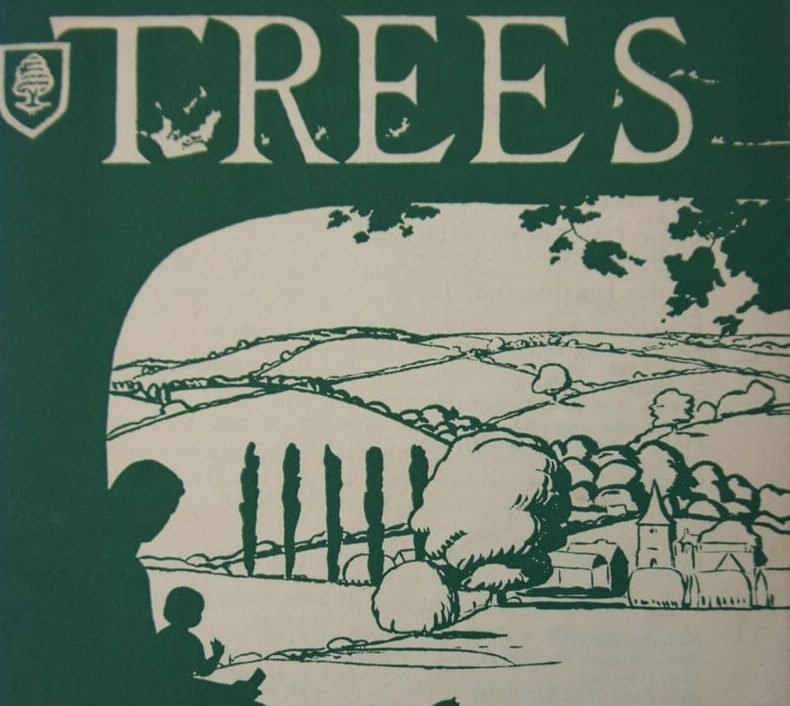TREES Journal Reaches the Ripe Age of 80
Autumn 2016 marks the 80th birthday of Trees, the journal of International Tree Foundation, known as The Men of the Trees in the past. This makes Trees one of the oldest environmental publications still going strong today. In fact we have just published the 73rd Volume of the journal.
In its early years, trees was published six times a year. From the 1940s, this was reduced to three times a year, before becoming an annual from 1987 onwards, as it remains today. The journal has always been issued free to members, and the first issue was priced at one shilling for non-members.
The launch of trees was welcomed by a diverse range of luminaries. Bledisloe, the ex-Governor General of New Zealand, observed:
“The association of mankind with the beauty, the verdant splendour, the grace and the symmetrical balance of a well-grown forest tree cannot fail to be influence for good human character and enrich human vision, and a Journal which, with knowledge and sympathy extols their merits and encourages their planting and their due protection deserves all support”. Ethel Mannin, novelist and travel writer wrote: “I hope your tree magazine will be a great a success, and do its part in fostering a love and appreciation for trees, and a desire for their cultivation and protection”.
Trees Journal Volume 1
The journal was started to advance the aims of The Men of the Trees as “a society of tree lovers who are working to create a universal tree sense and encourage all to plant, protect and love trees everywhere”. Our founder, Richard St. Barbe Baker, contributed to most issues and emphasised both the ecological and spiritual value of trees and forests and warned of the damage that was being caused by rampant deforestation. His words from the article “Our Dependence on Trees” from the second issue, published in December 1936, are very prescient:
“Too often in the past man has been wasteful in his harvesting of tree wealth and has even sacrificed great forests to agriculture, forgetting that the fertility of land wholly depended upon the presence of trees. Through his industries he is learning how dependant he is upon the presence of trees for climate and rainfall, soil protection and the sheltering of helpful birds, which control a thousand pests. But for the trees there would be no food, the world would be a desert and civilization would cease”.
The journal also featured photos from the annual Tree Lovers’ Calendar which was first published by The Men of the Trees in 1928 and continued until 1962. trees has actually changed its name several times during its 80 years. In 1949 it became “Trees and the New Earth” for a number of years to coincide with our launch of the New Earth Movement and the New Earth Charter. And in 1956, Volume 20, it became “Trees and Life” when we featured the short story “The Man who Planted Hope and Grew Happiness”, by Jean Giono.
Trees Journal Vol. XIV, i
Trees Journal vol. XX, i
Back to today and in our 73rd Volume of trees, we feature the campaign to save Kafuga Pocket Forest in Uganda, the Global Trees Campaign and our own centenary campaign (we will be 100 in 2024!) to plant 20 Million Trees for Kenya’s Forests. We also have fascinating articles by Tony Rinaudo on Farmer Managed Natural Regeneration – the treasure lies dormant beneath your feet and Camilla Allen on Baker’s ‘Great Green Wall’.
In fact, the Trees Journal archive is itself a treasure trove of insight and wisdom. We will be publishing interesting articles from the previous issues on our website over the coming year, so watch this space!
You can read trees volume 73 online today by following this link.
By Andy Egan, Chief Executive Officer, International Tree Foundation
Donate Today
Support communities on the front lines of the climate crisis to plant trees, restore ecosystems and improve their livelihoods.





